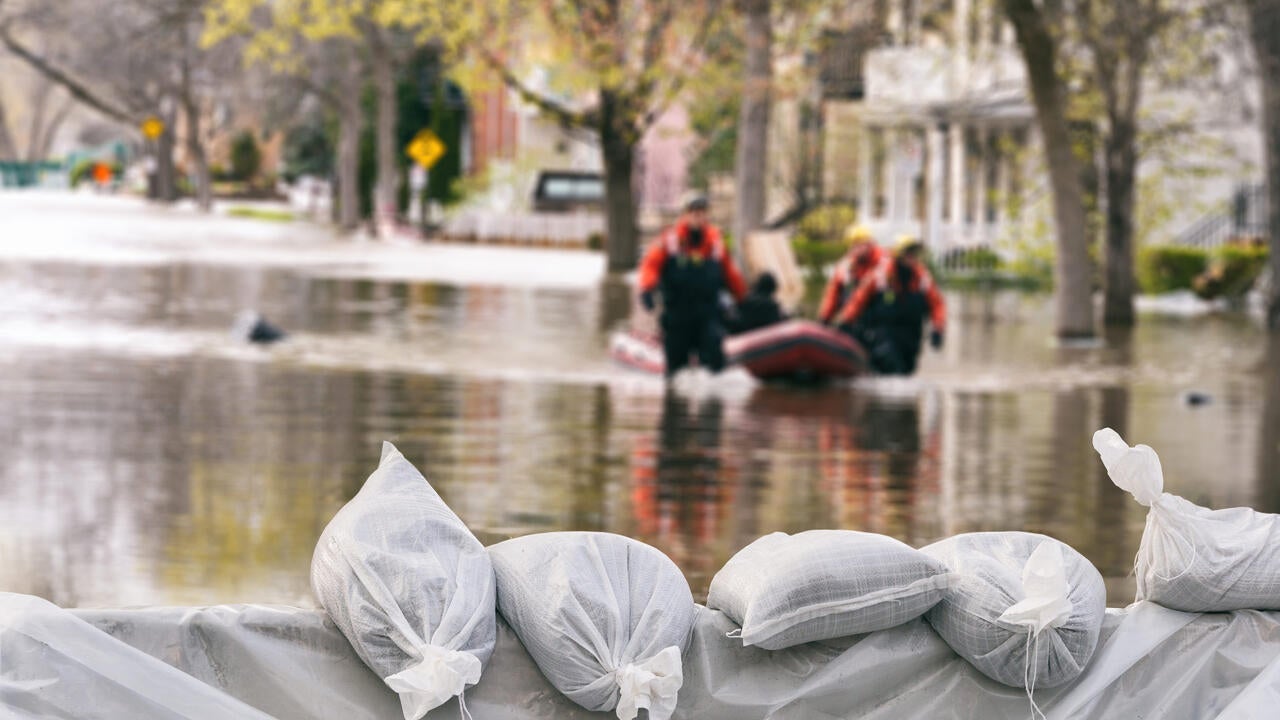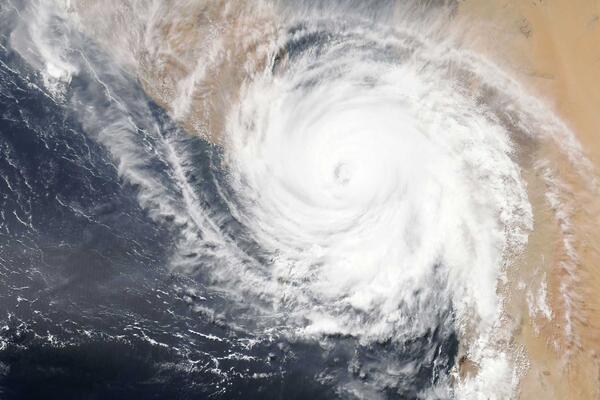
Data-driven 3D maps that inform homeowners of flood risks
Waterloo researchers are developing the first national climate change flood-risk map to empower Canadians who are living in high flood-risk areas

Waterloo researchers are developing the first national climate change flood-risk map to empower Canadians who are living in high flood-risk areas
By Heather Bean University Communications
Jason Thistlethwaite (PhD ’11)
Professor, Faculty of Environment
> School of Environment, Enterprise and Development
Due to climate change, flooding has now replaced fire as the greatest risk to Canadian property owners. Homeowners pay close to $600 million out of pocket annually for flood damage. But as flood risk intensifies every year, most Canadians have no idea they’re at risk, and even fewer know what to do to protect their most valuable asset.
In a report called Canadian Voices on Changing Flood Risk (PDF), Jason Thistlethwaite, a professor in the Faculty of Environment and his colleagues in the School of Environment, Enterprise and Development, found only six per cent of the 2,300 Canadian property owners polled knew they were living in high-flood risk zones. But 90 per cent said they would like to be informed if they lived in a flood-risk zone.
As the risk of flooding increases, federal policy is shifting the burden of responsibility for flood recovery to property owners. But most people don’t purchase additional overland flooding insurance – largely because they aren’t aware of their flood risk.
Thistlethwaite wants to change that. He and his colleagues have teamed up with the insurance industry and local governments in a unique partnership to be Canada’s first line of defence from climate-related property damage. They’re building data-driven 3D visualizations of flood-risk areas to convince governments at all levels and property owners to take action to protect at-risk homes. And they’re working on the first national climate change flood risk map, designed to empower Canadians with the knowledge they need to reduce vulnerability.
One reason there hasn’t been a sense of urgency around Canada’s greatest climate change risk, says Thistlethwaite, is the way we recover from floods.
“We need to stop rebuilding in high flood risk areas. After disaster happens, the government spends millions of dollars to help rebuild in an area where risk remains high. To people who are not affected, it looks like the problem is solved.” For flood survivors, however, Thistlethwaite points out, “it’s just the beginning.” Low- or middle-income families lose money that might have been spent on retirement or education. Some may lose their homes entirely.
Thistlethwaite’s survey revealed that when homeowners understand risk, they’re prepared to take responsibility for prevention. That’s why it’s so important to him to provide flood risk information to Canadians. “We know the risks; can share the information. It’s something a university can champion.”
Photo credits: Marc Bruxelle/iStock/ThinkStock

Read more
Breakthroughs in big data, alternative fuels and energy storage offer hope for a sustainable future. But the real challenge is social and political – not technical.

Read more
Waterloo researcher is helping families adopt smart technology and smart practices for sustainable living

Read more
One global issue, four approaches to address it. Waterloo researchers weigh in on how to stem catastrophic climate change.
The University of Waterloo acknowledges that much of our work takes place on the traditional territory of the Neutral, Anishinaabeg and Haudenosaunee peoples. Our main campus is situated on the Haldimand Tract, the land granted to the Six Nations that includes six miles on each side of the Grand River. Our active work toward reconciliation takes place across our campuses through research, learning, teaching, and community building, and is co-ordinated within the Office of Indigenous Relations.